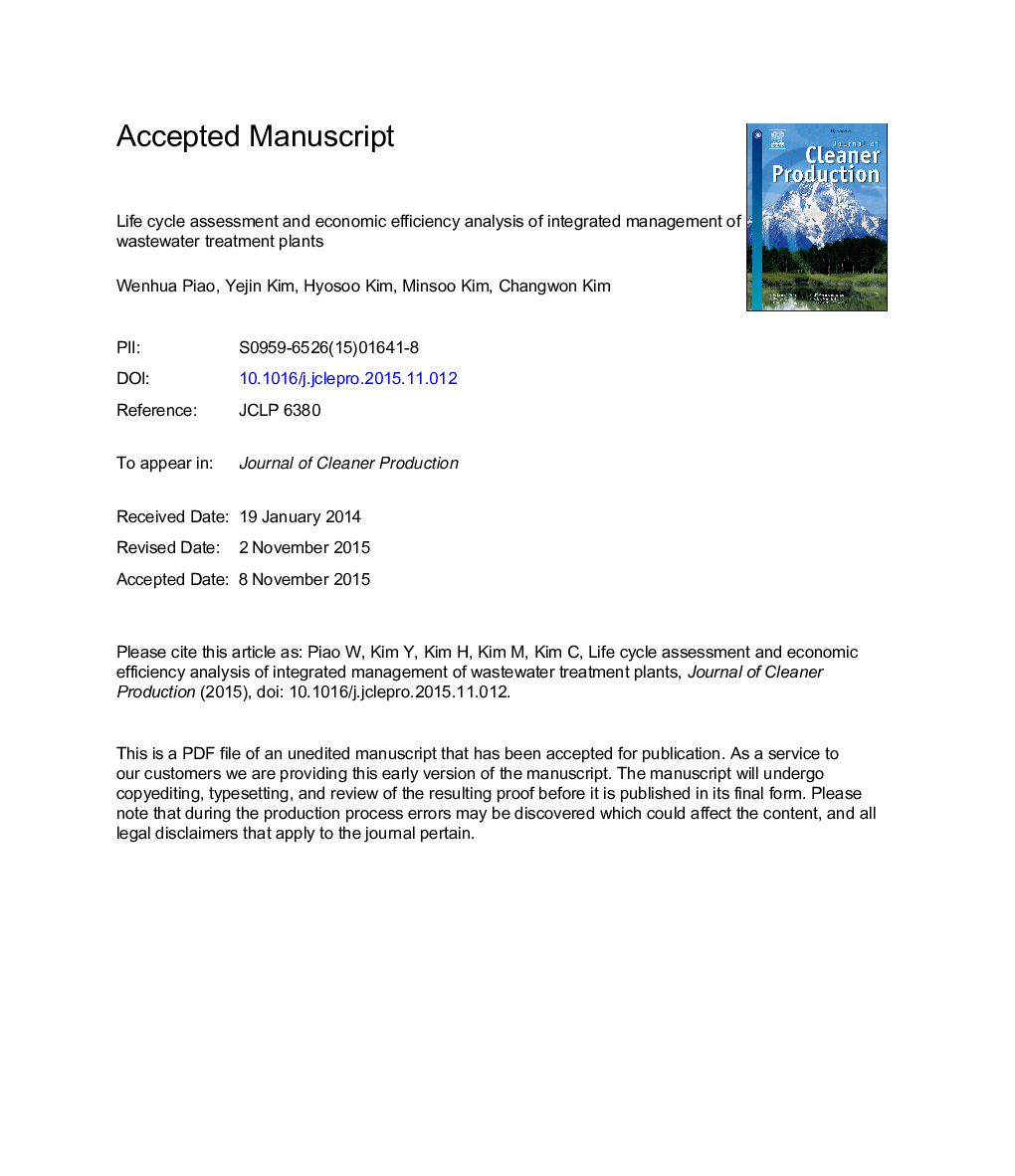| Article ID | Journal | Published Year | Pages | File Type |
|---|---|---|---|---|
| 8102881 | Journal of Cleaner Production | 2016 | 31 Pages |
Abstract
This paper evaluates several Wastewater treatment plant (WWTP) processes, an integrated sludge management system, and waste sludge disposal methods in a large city based on life cycle analysis (LCA) and economic efficiency analysis (EEA) together. Among the three WWTP processes considered, the A2O process (S-WWTP) showed the lowest eutrophication potential (EP) and global warming potential (GWP), but the highest acidification potential (AP) and human toxicity potential (HTP). Simple integration of sludge treatment by combining two sludge treatment lines resulted in enhanced anaerobic digestion and production of less sludge. For final sludge disposal, incineration with integrated sludge management showed the highest reduction of life cycle impact analysis (LCIA) in all four categories. The simple integration of sludge management could reduce the sludge handling cost by 6.1%. As a final sludge disposal method, incineration with integration of sludge management was the most economic: reducing operation and management (O&M) cost by 33%. These results demonstrated that application of LCA and EEA would be a useful tool for optimizing an integrated sludge-management system. The proposed integrated sludge-management alternatives could provide a valuable example for managing several WWTPs in a large city.
Keywords
Related Topics
Physical Sciences and Engineering
Energy
Renewable Energy, Sustainability and the Environment
Authors
Wenhua Piao, Yejin Kim, Hyosoo Kim, Minsoo Kim, Changwon Kim,
